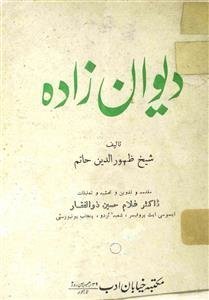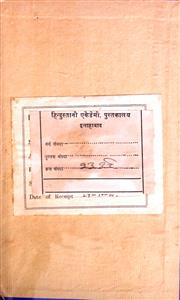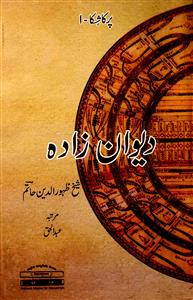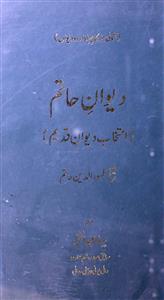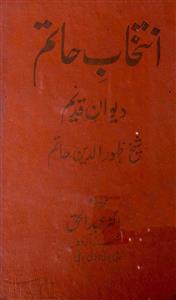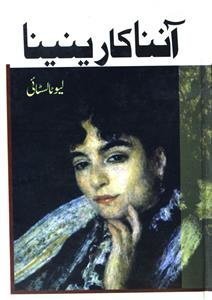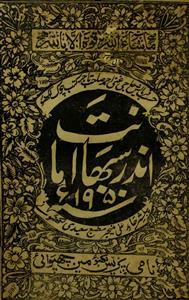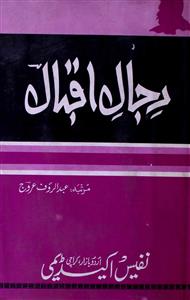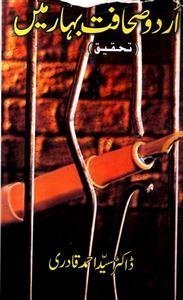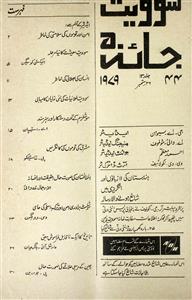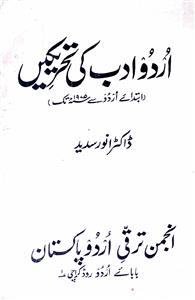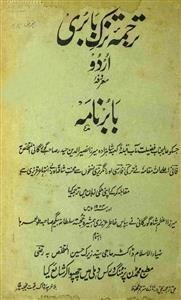 For any query/comment related to this ebook, please contact us at haidar.ali@rekhta.org
For any query/comment related to this ebook, please contact us at haidar.ali@rekhta.org
About The Book
حاتم کا یہ دیوان 1755میں مرتب ہوا تھا۔ اٹھارہویں صدی کے اوائل میں شمالی ہندوستان میں جن شعرا کے فیضانِ سخن سے اردو شاعری کا چراغ روشن ہو اُن میں ظہور الدین حاتم خصوصی اہمیت کے حامل ہیں۔ دہلی میں اردو شاعری کی ابتدا ایہام گوئی کی ادبی تحریک کے زیرِ اثر ہوئی۔ اس عہد کے بیشتر شعرا(آبرو، حاتم، شاکر ناجی، مضمون، یک رنگ، مظہر، یقین وغیرہ) ہمہ وقت ایسے الفاظ کی کی تلاش و جستجو میں سر گرداں رہتے تھے جو ذو معنی ہوں۔ جس کے نتیجے میں اردو شاعری ایک نوع کی پہیلی اور گورکھ دھندا بن گئی تھی۔ آمد کے بر عکس آورد کے عملِ شدید نے شعر سے داخلی جذبوں، متصوفانہ فکر اور دروں بینی کے میلانات کو پوری طرح بے دخل کر دیا تھاجو اُس وقت کی فارسی شاعری کے نمایاں اوصاف تھے (حالانکہ فارسی شاعری میں بھی ایہام کا استعمال موجود تھا)۔ یہام گوئی کی تمام خامیوں کے با وجود یہ بات بھی سچ ہے کہ اردو زبان اور اُس کی کی شاعری میں ہندی نیز دیسی زبان کے ایسے متعدد الفاظ شامل ہو گئے جو ذو معنویت کی صفت سے متصف تھے۔ لیکن اس ضمن کا سب سے بڑا واقعہ یہ ہے کہ جب 1720میں ولی کا دیوان دہلی پہنچا تو اُس کے مطالعے کے بعد دہلی کے شعرا میں یہ احساس پیدا ہوا کہ شاعری محض ذو معنی الفاظ کے استعمال اور محبوب کے خارجی خد و خال کے اظہار کا نام نہیںبلکہ اس میں ہر نوع کی کیفیت کو بیان کرنے کی غیر معمولی قوت موجود ہے۔ لہٰذا اسی احساس کے نتیجے میں دہلی کے شعری معا شرے میں اصلاحِ زبان کی تحریک کا آغاز ہوتا ہے۔ اس ضمن میں حاتم اور مظہر جانِ جاناں کے نام سرِ فہرست ہیں۔ یوں توحاتم کثیر الاشعار شاعر تھے اور اُنھوں نے اپنا ایک ضخیم دیوان بھی مرتب کیا تھا۔ لیکن اصلاحِ زبان کی تحریک کے بعد اُن پر غزل اور ریختے کے بیچ کا فرق واضح ہوگیا۔ یہی وجہ تھی کہ حاتم غزل یا ریختے میں دروں بینی کی اُس روایت کے حامی بن گئے جو ولی دکنی سے شروع ہوتی ہے۔ بقول حاتم “در ریختہ ولی را استاد می داند”۔ شائد یہی وجہ تھی کہ وہ فارسی میں صائب اور اردو میں ولی کو اپنا استاد تسلیم کرتے تھے۔ ولی کے اثرات اور اصلاحِ زبان کی تحریک کے نتیجے میں اُنھوں نے اپنے ضخیم اردو دیوان سے ایسے اشعار ِ کثیرہ نکال دیے جن میں یہام اور خارجی معاملات کا اظہار موجود تھا۔ اُنھوں نے نو مرتب دیوان کا نام” دیوان زادہ “رکھا جو مختصر ہے۔ لیکن حاتم نے اس دیوان کا ایک اہم دیباچہ لکھا ہے۔ جس میں میں اُنھوں نے یہام گوئی، اصلاحِ زبان کی تحریک، اور اُ س زمانے کی ادبی تہذیب کی صورتِ حال بیان کی ہے۔ دیکھا جائے تو دیوان زادہ کا یہ دیباچہ نظری نوعیت کی تحریر معلوم ہوتا ہے۔ اور اس نظری تحریر سے نہ صرف یہ کہ اُس زمانے کی ادبی صورتِ حال کا اندازہ لگایا جا سکتا ہے بلکہ اس کے توسط سے خود حاتم کے نظریہ شعر کو بھی بہتر طور پر سمجھا جا سکتا ہے۔
About The Author
Sheikh Zahuruddin was known as Shah Hatim where Hatim was his pen name. The word Zahur also incorporates his year of birth, that is 1111 Hijri. He was a pure Delhvi and was a sepoy by occupation. He was under an oath of alliance to an Islamic religious priest, Muhammad Ameen. He was the inspector during the governance of Nawab Amdat-ul-Mulk of Allahabad. Later, he had been in the services professor Hidayat Ali Khan, Muraad Ali Khan and Faaqir Khan, etc. However, in his last days he preferred to live in complete seclusion. He was a very cultured person and headed the second grade of poets. Mirza Soda, a literary doyen of all the times was his disciple and he was proud of him. Saadat Yaar Khan Rangeen, Muhammad Aman Nisar and Mukund Singh Faarigh were his other disciples. He had a good sense of humor and his daily haunt was around the Delhi fort, in the vicinity of a holy man, Shah Tasleem. Initially, Eehaam Goi was his basic shade of poetry but he abandoned it later and focused on the improvement of his language skills. He quit the use of any ambiguous and strange words. However, the people of that era were oblivious about it. He writes in the foreword of his Deewan.. this idea ( of improvement in language) is supposed to take its birth in the era of Naasiq-o-aatish or Momin-o-Zoq, but it started a century earlier. However, the only difference is that it was declared obligatory for everyone during this period… and the idea of Faqir Shah Hatim could not take a flight beyond his words and the foreword of his Deewan and his first Deewan became a feast for mildew during turbulent times. Nevertheless, he is at the top in the list of the literary personalities who focused towards the improvement of language. His second Deewan, Musammi Ba Deewan Zaada is found that consists of ghazals, mukhammas, rubaiyaat, saaqi naama, two masnaviis in the praise of tobacco and qehwa and a shehre aashob the titled Baarah Sadi that describes the pathetic conditions of the period of Muhammad Shah very deftly. The basic essence of his ghazals is romance and self-realization. The tone of the couplets is conversational but like the other poets of his era the language of his poetry is not free of extra words, despite the eloquence. In the foreword of Deewan Zaada, he narrates the forty five names of his disciples and Soda is one of them. It seems that Taabaa was also his disciple.
 For any query/comment related to this ebook, please contact us at haidar.ali@rekhta.org
For any query/comment related to this ebook, please contact us at haidar.ali@rekhta.org
Write a Review
Jashn-e-Rekhta 10th Edition | 5-6-7 December Get Tickets Here
